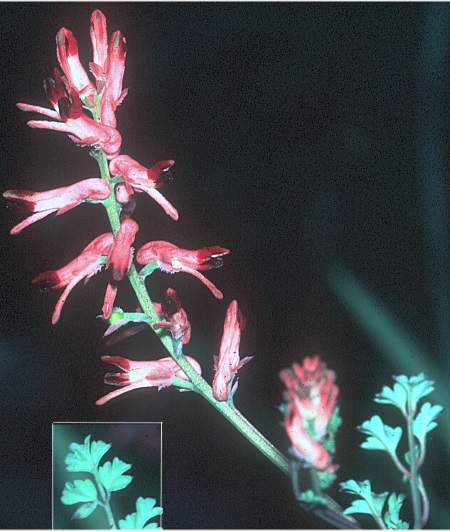
Family: Fumariaceae (Fumitory family).
Natives of Europe and the Mediterranean region.
Occurrence: Widespread weed in disturbed sites, bushland areas and gardens.
Identification:
- the leaves are divided into narrow segments (resembling parsley leaves)
- they are semi-erect or sprawling plants
- the flowers are 1 to 2 cm long, and almost cylindrical
- the flowers are pink and red to white
- the sepals are small, oval to triangular patches, and similar in colour to the petals.
There are several similar species. The commonest are
White fumitory (Fumaria capreolata)
Flowers are white and 9mm long or more.Wall Fumitory (Fumaria muralis
Flowers usually pink. Fruit stalks are stout and held erect. The smallest leaf divisions rarely more than 2 mm wide. The fruit are squarish at the base.Bastardís Fumitory (Fumaria bastardii)
Flowers are usually pink. the fruit stalks are slender and slightly curved. The smallest leaf divisions about 3 mm wide. The fruit are rounded.Dense Fumitory (Fumaria densiflora)
The smallest leaflets are narrow. The flowers are red and almost stalkless, and the sepals are larger than those of other fumitories.Photos 1: Wall Fumitory is the most common of the local fumitories. Castlemaine.
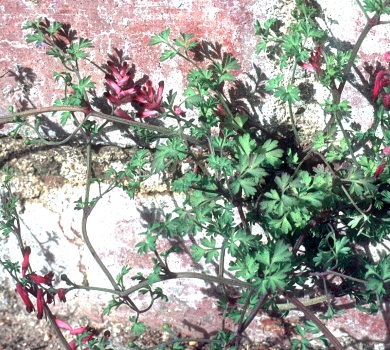
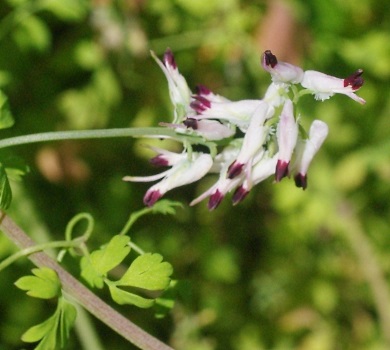
2: Wall Fumitory is an apt name for this example. Castlemaine. 3: The white flowers identify this example. White Fumitory. Ocean Grove.
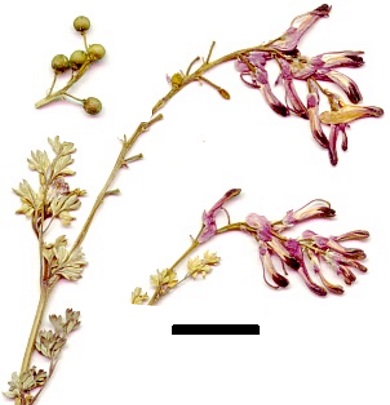
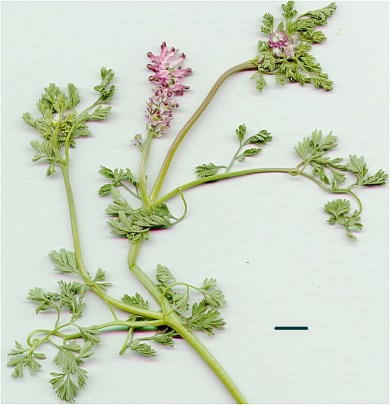
4: Bastard's Fumitory. Castlemaine. The flower and fruit stalks are more slender than those of Wall Fumitory, and the fruit are spherical. 5: Dense Fumitory. Hagues Rd, Barkers Creek. The flowers are almost stalkless.


2: Wall Fumitory is an apt name for this example. Castlemaine. 3: The white flowers identify this example. White Fumitory. Ocean Grove.


4: Bastard's Fumitory. Castlemaine. The flower and fruit stalks are more slender than those of Wall Fumitory, and the fruit are spherical. 5: Dense Fumitory. Hagues Rd, Barkers Creek. The flowers are almost stalkless.